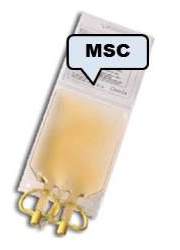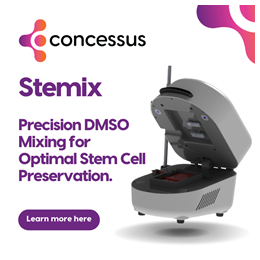You are here
Cost comparison: Saving Stem Cells versus Buying Them

Let's say that you are a medical consumer who lives in the United States. We are all medical consumers at some point in our lives. Financially, does it make more sense for you to save your own stem cells for later use, or to assume that you will buy an off-the-shelf stem cell therapy when the time comes that you need one?
From a medical perspective, there may be biological advantages to either saving your own cells versus buying donor cells. Perhaps in a couple of decades "personalized medicine" will become the norm, so that having your own stem cells confers a big medical advantage towards treating your health conditions. On the other hand, any donor stem cell therapy that makes it through FDA approval and becomes available as an off-the-shelf product will have a well-established profile of safety and performance against controls.
But let's put medicine aside for now, and compare the two options from a strictly financial perspective. We will construct a cost comparison of therapy with mesenchymal stem cells (MSC) taken from blood-forming tissue: storing your own versus buying a product. On both sides of this comparison, the MSC have to be isolated and grown in a laboratory to obtain a sufficient dose for therapy.
This is an important caveat: we are comparing the costs of stem cells when they are part of a so-called "manufactured" therapy product. In the United States, there is a big difference in how the FDA regulates stem cells, even your own stem cells, depending on whether they are raw or "minimally manipulated", versus "more than minimally manipulated" (this is the FDA language). Any time stem cells are cultured, even if your own cells are grown and then re-infused, the FDA considers the therapy to be a biologic drug, and it is subjected to a much higher and more expensive level of regulation.
Let's continue with our effort to construct a cost comparison for stem cell therapy consisting of MSC that have been cultured to expand the cell count. This type of stem cell is ideal for a comparison of your cells versus donor cells, because MSC do not require considerable donor-patient matching, so in theory your own cells or donor cells could both be well suited for the same medical therapy.
On the one side we have your own MSC. For the sake of this argument, we assume that when you were born your parents banked the MSC in your umbilical cord tissue. We further assume that the laboratory separated the MSC from the cord tissue and cultured the MSC to expand the cell count up to a potential therapeutic dose before they were cryopreserved. At the Genesis Bank, one of several companies offering this type of service direct to consumers for comparable prices, the generation of isolated and expanded MSC currently carries a first year cost of $3725, and a total cost of $5600 after 20 years of storage. Since this is paid in installments over 20 years, the consumer cost in today's money is only $5,021, assuming a 4% nominal interest rate. This storage plan allows the consumer to amortize the upfront cost of obtaining cells for therapies that could potentially be delivered to multiple family members over multiple treatments.
On the other side we compare to donated MSC that have been prepared in a biologic drug. For the sake of this argument, our comparison drug is Prochymal. The U.S. company Osiris Therapeutics (Nasdaq: OSIR) originally developed Prochymal, but it was sold last week to Mesoblast Limited (ASX:MSB; USOTC:MBLTY) of Australia. Prochymal is under study for several indications and in 2012 it was approved for Graft-versus-Host Disease in both New Zealand and Canada. The CEO of Osiris has said the cost for 10 pediatric doses of Prochymal is $200,000, or $20,000 per dose (earnings call on 7 May 2013). We will adopt that as a preliminary estimate of the cost per dose for approved indications in the United States.
We now have a ballpark comparison: you can store your own MSC for 20 years at a cost of about $5,000 in today's money, or you can pay four times more to purchase donor MSC for about $20,000 per dose.
Obviously this is a simplistic cost comparison, and many additional factors need to be considered to construct a practical comparison of the cost of the two therapy pathways:
1. At present the only way that a patient in the United States can legally receive therapy with their own expanded cells is to participate in an FDA-approved clinical trial. The cost of the regulatory overhead to set up an approved trial could increase the price of therapy with your own cells buy double or more. This factor is almost impossible to forecast.
2. There is an important distinction between a single dose of a cell therapy versus a course of therapy, which may require multiple doses. No storage of personal MSC can truly be "treatment-ready", since the research to define those treatments is still underway and none have yet been FDA approved. Hence, a course of therapy may require additional expansion of the stored cell count to create multiple doses, which would require additional weeks growing the cells in a laboratory and performing testing before release.
3. Prochymal is available as an off-the-shelf product, which saves the consumer both time and money. A consumer who wishes to use MSC from a family bank must first request that the bank retrieve and thaw the cells, then wait while they are prepared for therapy. The preparation may require additional culturing, which will add significant time and cost.
4. Of course, what any therapy actually "costs the patient" depends on what type of health insurance the patient has, and in the United States that varies greatly from one person to the next.
We have presented this cost comparison purely as a starting point for discussion, and it should not be construed as medical, financial, or regulatory advice. In particular, the regulatory environment remains uncertain and future changes could significantly impact the ability to use your own expanded cells, by alleviating or increasing the regulatory burden and cost. Nonetheless, storage of MSC in a family bank does offer consumers the option to pay in installments for storage of therapeutic cells that may be used many times in the future.


